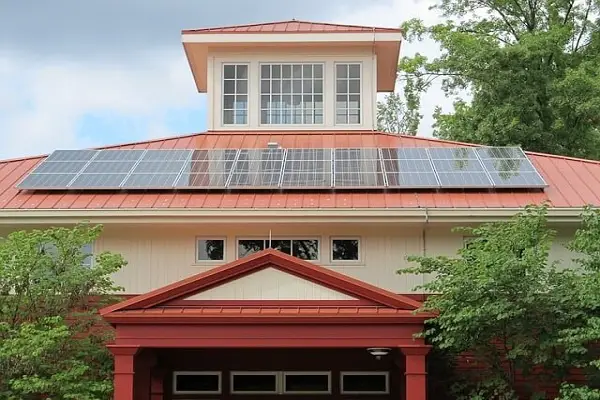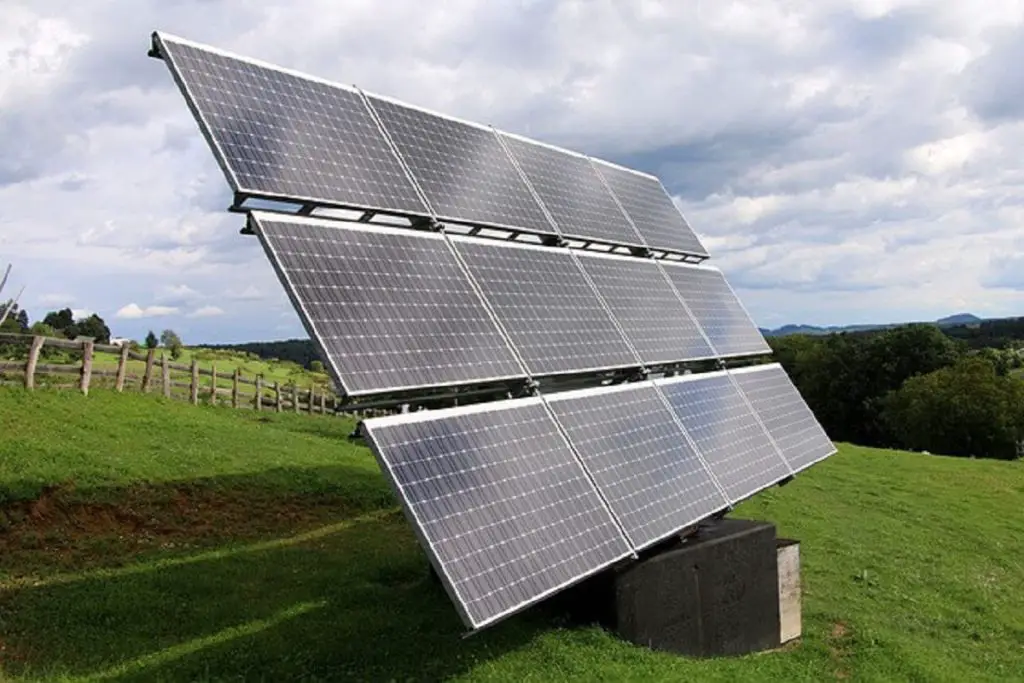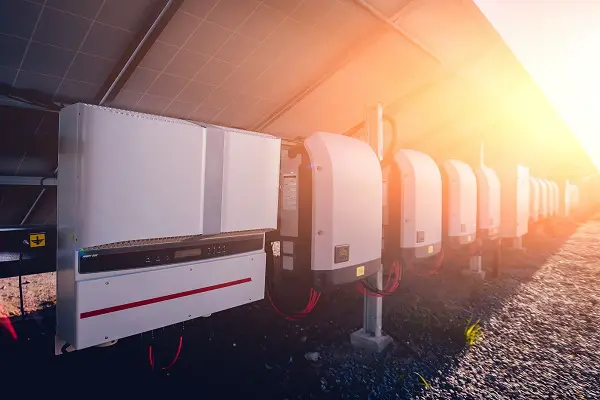What Can Affect Efficiency of Your Solar Panels
Introduction
Do you remember the time you had to procure your solar system amidst a swamp of choices and promises, each one better than the first?
This confusing moment may have left you fighting an inner battle of selecting the most suitable solar technology that offers the best price and guaranteed output.
In solar energy, one of the few things that will confuse you is the connection between energy output and installed power.(1) Truly, the link is mysterious and misleading.
For instance, how many watts of electricity per hour of exposure to sunlight will a 200-Watt solar panel on your roof produce in 24 hours or in 365 days?
Let us get to the basics. Do you understand that the solar panels will perform better in one location than the other? (2) A particular solar panel of 200 Watts that is assembled and installed in Seattle will produce a different quantity of energy when taken to Phoenix.
Now, the puzzle, in this case, is: ‘what is responsible for the differences in energy quantity and is it possible to set specific expectations about the potential of solar energy?
You cannot answer these questions if you do not understand the potential of your solar technology well enough.
As a fair token, we will help you put things into perspective by giving you a clearer picture of the principles that surround the production of solar energy.
By so doing, we will highlight the factors that will affect the efficiency of your solar panels. When you understand the presiding factors, you can make better decisions regarding the choice of product that strikes a balance between cost and output.
Therefore, this article will focus on the most important factors that influence the production of solar energy.
What Is Solar Radiation?
Also known as insolation, solar radiation is the fuel of a combination of solar systems.(3) Generally, solar systems produce electricity. In your home or office, the production of hot water by your solar thermal system will depend on the intensity of radiation and the availability of solar radiation.(4)
Theoretically, solar radiation is constant in the atmosphere. That is, there are no fluctuations in the amount of solar radiation available before the radiation hits the surface of the Earth.
Nonetheless, your location on the Earth will determine the intensity of radiation – which in turn, interacts with the amount of solar energy that the solar panels can produce at a certain time.(5)
If you are thinking of what can affect the efficiency of your solar panel, you have come to the right place to seek answers.
What can affect the efficiency of solar panels?
Practically, the weather changes according to seasonal transitions. Similarly, the position of the earth towards the Solar Body (Sun) doesn’t remain constant within a year.
Consequently, a solar panel at a particular location which generates 100 Watts in June may also generate a meager 50 Watts in December. In different geographical locations, the same panel which produces 96 kWh in a year may generate double the amount in another location.
By examining both instances, you will understand that the varying amount of sunlight is the reason for the difference in energy production. Yet, soiling, weather, shading, and temperature are external factors that may affect the efficiency of your solar panel.
The factors for performance
Before diving into the core of the matter, we must also remind ourselves about the significance of the optimum efficiency of the solar panels. There are no grey areas here; it is either black or white – a solar panel will generate more electricity from sunlight if it is at peak efficiency.
For example, a solar panel with an efficiency of 12% converts less radiation to electricity than another with 18% efficiency. Simply, the lesser figure that represents the efficiency of the solar panel, the lesser its ability to generate electricity.(6)
Meanwhile, solar panels of high efficiency present great economics as they:
- Require lesser solar panels to generate more electricity
- Offer long-term and desirable savings
- Require a smaller space than their contemporaries
In your search for solar panels, regular solar technologies have varying solar efficiencies – starting from 20% to a minute 6%.
An important note that is worthy of mention is to avoid comparing the rates of solar cell efficiency whereas you should compare the efficiency of solar panels. In addition, you want to know the efficiency loss.
If you purchase solar panels of high quality, you will realize that the efficiency never changes with consistent use. But solar panels of lesser quality often lose their efficiency after exposing them to sunlight.
Compare this loss in value with a moment in your life that you or someone you know drove their new car off the tracks. Fortunately, you can avoid this loss without much hassle.
Critical Factors That Influence The Efficiency Of Solar Panels
Temperature
The dynamics of a solar system is not as complex as many people believe. One of the few celebrated facts about solar panels is that they are less efficient as their warmth increases. Weird, right? Anyone would have expected the opposite.
Walking in a pool of water is more difficult than walking through the air, isn’t it? No matter the variables, it is scientifically easier and faster to move through the air because of the absence of resistance that is present in water. It is a similar case for electrons in the solar system.
When the material of the cell is hot, resistance builds up in the system and the electrons move at a slower pace.(7)
Therefore, the production of electricity or conversion of radiation occurs because of the controlled number of electrons that can pass through the circuit system at a designated time frame. For this reason, you must not ignore the quality of your solar panels and cell.
The boon of high-quality solar panels comes into full scope during extreme heat – they facilitate the maintenance of performance levels of the system. But solar panels of lower quality will produce a lower amount of energy and lose efficiency at a rapid rate.(8) What a shame!
How would you feel when you purchase an ‘investment’ and it fades away in performance during a fine day in June when you have a greater need for it but it produces less energy than you expect.
Basically, this is a case of solar cells performing better in cold climates than the hot one. At a rate of 250C, solar panels have a tendency to deviate from this normal temperature when placed outside.(9)
As the temperature increases above 250C, each rise in degree renders both crystalline cells and amorphous cells decay by 0.5% and 0.25% respectively.(10)
In hot summers, the temperature of the solar panel may be as high as 800C. It means that the solar panels will be producing less power (about 25%) than expected at room temperature.
In the month of May and June, a 100 Watts solar panel produces about 75 Watts of energy in some Asian regions where the temperature may peak at 400C and more while there is a competitive need for electricity.(11)
Irradiance
Irradiance is self-explanatory for people who have studied Physics without bias. Even though it is not a regular word, there are some people who will say that ‘the irradiance of the outside is a killer.’ While it is right, it may confuse people.
Typically, irradiance describes the amount of sunlight that hits a particular surface area at a time. A solar panel will produce more energy with an increase in the irradiance. The simple formula is that more electricity equals more sunlight – especially when sunlight is constant.
Unfortunately, irradiance is dynamic. The simple factors that affect irradiance are air pollution, hazy weather, passing clouds, and the angle of the sun.
As the rays of the sun travel through the cloud, there is a change in the amount of radiation that eventually hits the surface of the Earth.
By reflecting and absorbing some parts of the solar radiation, the clouds are significant players in energy production.
Depending on cloud cover, two sites within the same latitude may experience different levels of solar radiation. But the average amount of solar radiation that the clouds can scatter is up to 20%.(12)
Nonetheless, the annual quantity of energy that the system receives may be relatively constant. On average, the sun’s energy may vary up to about 10% in a certain year.
Yet, you can project the output of your solar energy on the past records on the solar system.
Shading
This factor is a no-brainer. A solar panel produces more electricity without the influence of a shade.(13) There is a seasonal variation in the distribution of shading.
In different seasons and climates, there are various causes of shading – the spread of tree branches, the change in the angle of the sun, and several other barriers.
A binding factor is the height, size, and proximity of these barriers. If a solar system is properly designed, it will either eliminate or minimize the shading.
The solar radiation that will reach your solar technology is dependent on your immediate surroundings and that of the solar panel.
Buildings, vegetations, and other features on the landscape may cast a shadow to block incoming radiation on the solar panels.
Frankly, it is somewhat uneasy to avoid shading but the production of electricity may be at peak with a properly designed solar panel.
As an apt solution, you may want to discontinue the addition of rooftop structures. Also, it is time to cut down or trim the branches of the tree in your compound that contributes to shading.
Soiling
This is as straightforward as the factor of shading as well. You do not expect a dirty or dusty solar panel to produce as much electricity as a clean one.
Soiling is a term that describes the grime, dirt, debris, and dust which settle on the surface of the panels.
What it does is to block the sunlight from hitting the solar cells, thereby reducing the performance of the solar system. You may not be concerned with soiling if you reside in a region that experiences regular rain.
The desert Southwest and California are regions that are synonymous with dry weather and witness regular soiling, especially in extreme summer.
Furthermore, solar systems that are approximate to construction sites or dust-producing locations may increase the settlement of dust. To prevent clogging of the system, cleaning and maintenance practices are important.
However, these practices may be insufficient to maintain energy production or cost especially when the system is poorly designed.
Snowing
Until the snow is melted or plowed, snow blocks reduce the production of electricity. For this reason, recent solar technologies are under review to incorporate the snow effect into the estimates of energy.
Generally, there is a range of 8% to 30% for performance degradation between early spring and mid-winter months, in that order.(14) Hence, there is a discrepancy in the amount of electricity depending on the intensity of snowfall.
Latitude
The spherical shape of the Earth is entirely responsible for the varying intensity of the solar rays.(15)The effect is particularly intense in the Equatorial region.
There is a decrease in energy density as we move away from the Equator and the solar rays are redistributed around a larger region.
Therefore, you will prefer to be closer to the Equator if you want to reap the benefits of your investment.
No one can dispute the effect of the latitude on the production of electricity. The earth tilts during every rotation and as systems are installed during these periods, there is a lower number in the production of energy.
For instance, northeastern residents in the United States will require a larger solar system than their southwestern counterparts. There isn’t a lot you can do to improve the performance of your system unless you choose to relocate.
Conclusion
In solar power production, these key factors form the backbone of the efficiency of solar panels.
There is nothing ambiguous about the terms and conditions except that you do not see the need to maximize your investment.
Most people often eulogize solar power business as a complicated venture that requires a great deal of attention to details.
P.S. If you find this post useful and interesting, please do not hesitate to share it.
If you have something to add- Leave a comment below!



